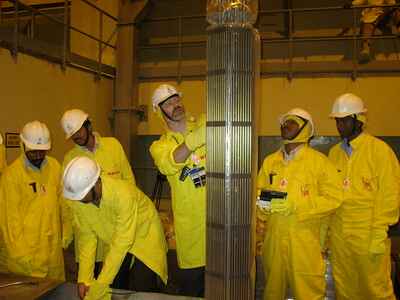Clean Energy Meaning, Comparison, Types, Importance and Companies
Clean energy is energy that is not associated with notable gaseous emissions, pollution, or resource depletion. This article discusses clean energy meaning, comparison, types, importance and companies, as outlined below;
-Clean Energy Meaning: 5 Ways to Define Clean Energy
-Clean Energy Vs Renewable Energy Vs Green Energy
Clean Energy Meaning: 5 Ways to Define Clean Energy
Clean energy is a term which generally describes all forms of energy that can be harnessed without any significant environmental impact, such as pollution, greenhouse emission or global warming.
The definition of clean energy is especially relevant within the context of potentially-harmful gaseous emissions that can contribute to environmental problems like air pollution, ozone layer depletion and climate change.
For this reason, clean energy resources are often identified as those whose impacts on the environment in terms of gaseous emissions, are very minimal compared to unclean energy resources like fossil fuels; throughout their lifespan.
Below is an alternative version of the clean energy meaning, which provides further clarity to this perspective by naming some sources of clean energy;
Clean energy is energy from natural sources like solar radiation, wind, tides and waves; which can be used for various purposes without much risk of any form of environmental degradation [3].
It is noticeable that some renewable energy sources like geothermal reservoirs are not given any priority in the above definition.
This indicates that although they are similar concepts and often used interchangeably, clean energy and renewable energy are not identical in meaning. Further explanation of the difference between both concepts is provided in another section of this article.
The above definition also makes mention of the fact that clean energy can be applied toward various purposes. In the clean energy meaning that is outlined below, some of its potential uses are highlighted;
Clean energy is energy from non-hazardous sources that can be used for domestic/industrial heating, food processing in sustainable agriculture, transport, or electricity generation, with minimal risk to the ecosystem.
The multi-purpose applicability of clean energy is helped by the fact that it can be easily transported, conserved and converted using energy storage and management technologies like; batteries, distributed energy resources management systems (DERMS), microgrids, and conventional smart grids.
Highlighting some examples of clean energy utilization can also help to understand its uses. This is done in the clean energy meaning given below;
Clean energy is a type of energy that can be used with low risk to the environmental system, with examples such as; agrivoltaic system, hybrid solar-wave converter, tidal electricity generation, microgrid-transmitted wind power for remote locations, and ocean thermal energy conversion.
Lastly, clean energy meaning is outlined based on the importance and benefits of clean energy as an alternative to conventional energy;
Clean energy is alternative form of energy to fossil fuels, which is important for its role in the energy transition, and has benefits like; relatively-low maintenance cost, low environmental impact, local availability, contribution to sustainable development, green economic growth, energy resilience and improved public health [2].
Clean Energy Electricity
Clean energy electricity; or simply clean electricity, is electricity that is generated from clean energy sources.
This type of electricity is called 'clean' because its sources and process(s) of generation do not pose much risk of pollution to the environment.
The cleanest source of electricity is arguably solar energy; because solar panels and concentrators are generally made from recyclable, non-toxic materials like silica, and are relatively simple in design. Other clean sources of electricity include nuclear and wind.
These (nuclear, wind, etc.) are placed behind solar in terms of cleanliness because of the possibility some negative environmental impacts during their extraction, and/or in the lifecycle of their technological systems.
Examples can be observed in the extraction of radioactive fuel, the management of nuclear waste, and the risk of pollution associated with nuclear power plants, wave energy converters and wind turbines.
These instances all indicate that no energy resource or option is totally clean and environment-friendly. The assessment of clean electricity is therefore a comparative one which is based on relative effects on the ecosystem compared to fossil fuels.
A typical example of clean electricity is power from off-grid solar systems, that is transmitted via an isolated microgrid network to buildings in a remote area.

Clean Energy Vs Renewable Energy Vs Green Energy
Clean, renewable and green are terms used to describe forms of energy that are considered sustainable compared to alternatives.
The difference between clean energy and renewable energy is that clean energy is defined mainly by instantaneous environmental impact; while renewable energy is defined by availability and replenishment.
Clean energy is simply energy that does not significantly pollute or degrade the environment, especially in terms of gaseous emissions into the atmosphere. It can also be described as energy with a low carbon footprint.
Renewable energy, on the other hand, is energy from sources like biomass, solar radiation, water (hydro), geothermal reservoirs, and air (wind); that occur abundantly and are constantly being replenished and supplied by natural processes.
The above description reveals that renewable energy is not always clean; as cleanliness and environmental sustainability are not among the core attributes that make an energy resource 'renewable'.
This is obvious when we consider some forms of renewable energy and resources like bioenergy, geothermal energy and biofuel; which are abundant, naturally replenished, but can emit significant (instantaneous) amounts of greenhouse gases into the atmosphere [1].
It is also observable in nuclear energy, which is clean at the point of use, but comes from radioactive materials that occur in finite amount in the Earth's crust (non-renewable).
The difference between clean energy and green energy is that clean energy focuses on environmental impact, while green energy focuses on both environmental impact and availability.
For an energy resource to be considered green, it must be both clean and renewable. This implies that the concept of green energy is more holistic from a standpoint of sustainability, than the concepts of clean and renewable energy respectively.
Below is a table that summarizes the clean, renewable and green energy comparison;
-
Comparison Criteria
Clean Energy
Green Energy
Renewable Energy
Focus Area
Environmental Impact
Environmental Impact, Natural Availability, Replenishment
Natural Availability, Replenishment
Relative Sustainability Scope
Narrow
Broad
Moderate
Examples
Solar, Wind, Hydro, Nuclear, Wave, Tidal
Solar, Wind, Hydro, Tidal, Wave, Bioenergy (carbon-neutral)
Solar, Wind, Hydro, Geothermal, Bioenergy, Wave, Tidal
Types of Clean Energy
There are two types of clean energy, which are; renewable and non-renewable, clean energies.
1). Clean Renewable Energy
Includes energy forms that are environmentally sustainable, as well as naturally replenished. Examples are solar, wind, and hydro energies.
2). Clean Non-Renewable Energy
This type of clean energy is safe and sustainable for the environment, but not replenished or constantly supplied in nature. An example is nuclear energy, which is clean when used in power plants to generate electricity, but is extracted from nuclear fuels like Uranium that are not renewable in nature (when describing nuclear energy as a clean resource, it must always be considered that this is confined to the end-use of nuclear fuels, not the extraction process).

Importance of Clean Energy
The importance of clean energy is based on its role in sustainable development, through social, environmental and economic benefits that enable the human society to meet its energy needs without destroying the natural ecosystem or causing deforestation, food insecurity, resource depletion and climate change, among other socioeconomic and environmental problems.
Benefits of clean energy are;
1). Preservation of natural biomes like forests
2). Improved energy resilience
3). Diversification of energy options
4). Job creation in the clean energy sector
5). Lower energy-related emissions
6). Reduced rate and risk of pollution, drilling hazards and oil spills
7). Public health improvement
8). Facilitation of innovative developments involving electric cars, sustainable power systems and distributed energy resources
Clean Energy Companies
Clean energy companies include;
1). Brookfield Renewable Corp.
2). Canadian Solar Inc.
3). Clearway Energy
4). First Solar Inc.
5). Iberdola SA
6). Jinko Solar Holing Ltd.
7). NextEra Energy
8). Plug Power Inc.
9). TPI Composites
10). Vestas Wind Systems
Conclusion
We can define clean energy as a type of energy that can be harnessed for purposes like heating and electricity generation, without much impact on the environment.
Clean energy electricity is electric power generated by the conversion of clean energy in a generator, mechanical turbine or power plant.
Clean, renewable and green energies are different in their focus areas, and scope of sustainability; with clean energy focusing on environmental impact, renewable energy on natural replenishment, and green energy on environmental impact, replenishment and availability.
Types of clean energy are;
1. Clean Renewable Energy
2. Clean Non-Renewable Energy
Clean energy is important because if its social, environmental and economic benefits that enable the human society to meet its energy needs without destroying the natural ecosystem.
Benefits of clean energy are; natural biome preservation, energy resilience, diversification, job creation, low emissions, reduced pollution, public health improvement, and facilitation of innovation.
Some clean energy companies around the world are; Brookfield Renewable Corp., Canadian Solar Inc., Clearway Energy, First Solar Inc., Iberdola SA, Jinko Solar Holing Ltd., NextEra Energy, Plug Power Inc., TPI Composites, and Vestas Wind Systems.
References
1). Breunig, H. M.; Smith, S.; Rao, L.; Robinson, A.; Kinson, J.; Thornton, R.; Scown, C. D.; Rapp, V. (2022). "Economic and greenhouse gas analysis of regional bioenergy-powered district energy systems in California." Resources Conservation and Recycling 180:106187. Available at: https://doi.org/10.1016/j.resconrec.2022.106187. (Accessed 23 March 2023).
2). Ntanos, S.; Skordoulis, M.; Kyriakopoulos, G.; Arabatzis, G.; Chalikias, M.; Galatsidas, S.; Batzios, A.; Katsarou, A. (2018). "Renewable Energy and Economic Growth: Evidence from European Countries." Sustainability, MDPI, vol. 10(8), pages 1-13, July. Available at: https://ideas.repec.org/a/gam/jsusta/v10y2018i8p2626-d160100.html. (Accessed 23 March 2023).
3). Owusu, P. A.; Sarkodie, S. A. (2016). "A Review of Renewable Energy Sources, Sustainability Issues and Climate Change Mitigation." Cogent Engineering 3(1):1167990. Available at: https://doi.org/10.1080/23311916.2016.1167990. (Accessed 23 March 2023).





